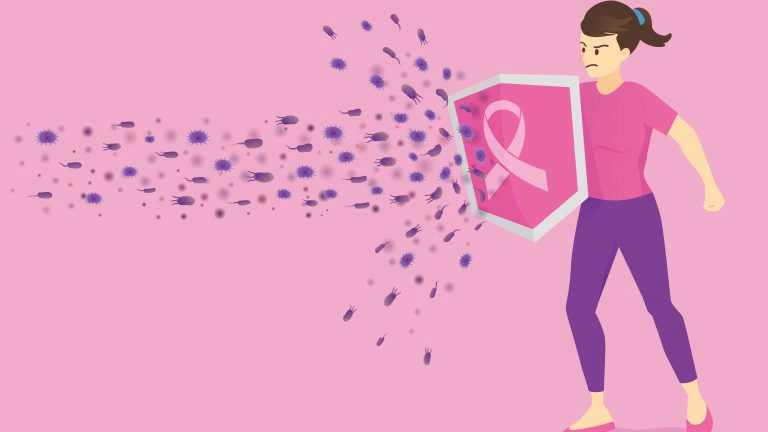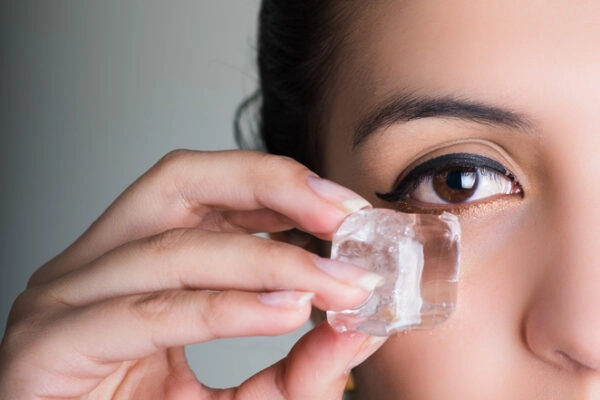Breast cancer is a complicated subject. Many people think the disease only occurs in older women. But that couldn’t be farther from the truth. Some people believe the disease only occurs in unhealthy women. That’s false as well.
There are many misconceptions about this terrible disease that affects so many women. In this post, we’ll go over some facts about breast cancer that you may not know. This is to raise awareness and urge women to take care of their bodies, no matter how old they are.
Breast Cancer Statistics
Before we dive into some of the little known facts about breast cancer, let’s start with some statistics.
- On average, every two minutes, a woman is diagnosed with breast cancer in the United States.
- Each year, more than 1,000 women under the age of 40 die from breast cancer.
- Younger women generally have more aggressive breast cancers and often lower survival rates. This is because breast cancer before age 40 differs biologically from breast cancer older women develop.
- Currently, there’s no effective breast cancer screening method for women under 40. This is because younger women have denser breast tissue, deeming mammograms ineffective.
- 12% (1 in 8) of women develop breast cancer. While that might seem like a small number, it’s a common disease that has affected more than 3.5 million women in the United States.
- Breast cancer is the most common cancer in women globally. In the U.S., the incidence rate of breast cancer is second only to skin cancers.
- Caucasian women are slightly more likely to develop breast cancer than are African American women. However, African American women are more likely to die from the disease. Breast cancer mortality is about 39% higher for black women than white women.
- If breast cancer is only present in the breast and hasn’t spread to other parts of the body, the five-year survival rate is 99%.
- In 2007, breast cancer rates have stayed the same for women younger than 50. The rate continues to decrease for older women. This may be due to increased awareness and getting regular mammograms.
15 Breast Cancer Facts You May Not Know
Now let’s get into some interesting facts regarding breast cancer symptoms, risk factors, trends, and treatments.
1. There’s Not Always a Lump
Many women associate breast cancer with lumps in the breast. But during the early stages, many women don’t experience symptoms. This is why it often goes unnoticed until symptoms do develop.
So to stay on top of things, you should look out for these symptoms:
- Swelling in or around the breast, collarbone, or underarm
- Thickening, swelling, or redness in or around the breast
- Changes in the nipple or nipple discharge
- Changes in the size or shape of the breast
- Tingling, warmth, or redness in or around the breast
- Pain in the breast
- Lump or nodes in or on any part of the breast
2. You Can Reduce Your Risk By Maintaining a Healthy Weight
Maintaining healthy body weight is one of the best things you can do to lower your risk of breast cancer. Excessive body fat can increase your chances of getting breast cancer because it raises estrogen levels.
Plus, overweight women often have elevated levels of insulin. There’s a link between high insulin levels and some cancers, including breast cancer.
So if you’re overweight, try to drop at least half a pound per week for six months. You can maintain a healthy weight by eating a plant-based diet and exercising regularly. Your diet should include lots of fruits, vegetables, whole grains, protein, and low-fat dairy products.
Be sure to limit your intake of saturated and trans fats, sodium, and added sugars. Brisk walking is a great way to reduce your breast cancer risk. Try to squeeze in at least 75 minutes of brisk walking into each week.
3. Studies Show Monthly Self-Exams Aren’t Necessary
Growing up, our doctors, including gynecologists and primary care physicians advised us to perform breast self-exams to detect lumps. However, this may not be necessary, according to the American Cancer Society’s new guidelines.
This is partly because lumps aren’t always a symptom. So that’s why it’s so important to pay attention to how your breasts look and feel. And if you notice any unusual changes, be sure to report them to your doctor.
4. Men Can Develop Breast Cancer, Too
While women are a lot more likely to have breast cancer, men can get it too. According to the American Cancer Society, a man’s lifetime risk of breast cancer is only about 1 in 1,000. they have breast tissue.
However, the disease is less common in men because (1) they have less developed breast duct cells and (2) they usually have lower levels of female hormones (i.e. estrogen, progesterone) that affect breast cell growth.
5. Most Breast Lumps Are Benign
For most women, feeling a lump on the breast can be a horrifying experience. But the National Breast Cancer Foundation reports that 80% of breast lumps are benign. Most breast lumps are caused by:
- Cysts
- Benign tumors
- Mastitis
- Blood clots
- Scar tissue
Keep in mind that just because a lump is benign doesn’t mean it isn’t harmful or won’t cause any complications. Benign simply means noncancerous. So if you do notice a lump in or on your breast, make sure you seek medical attention.
6. Breast Cancer Can Develop at Any Age
Older women are at higher risk of developing breast cancer. Risk starts to increase after age 40, which is why doctors recommend mammograms at this age.
However, younger women can get breast cancer, too. Around 4% of women with breast cancer in the U.S. are younger than 40. For women in their 30s, the risk is 1 in 229. While this risk is a lot lower than it is for older women, it’s essential to know that no woman is exempt from developing the disease, no matter what age she is.
7. Most Women With Breast Cancer Have No Family History
Certain health conditions tend to have genetic factors. Cancer is one of them. The American Cancer Society reports that women who have a mother, sister, or daughter with breast cancer may have double the risk of having it, too.
However, just because there’s a risk doesn’t mean it will happen. 85% of women with breast cancer have no family history. So even if you don’t have family members with the disease, it’s vital to get breast exams and mammograms around age 40.
8. Breast Pain Isn’t a Common Breast Cancer Symptom
Pain is a useful mechanism that tells the body something is wrong. It acts as the body’s early alert system. So if you’re experiencing pain in your breast, you might start to worry that something isn’t right.
However, breast pain isn’t a common breast cancer symptom. Breast pain is more likely to be a symptom of non-cancerous conditions. For example, if you experience breast pain, it’s more likely due to hormonal changes, such as pregnancy or menstruation.
9. Excessive Alcohol Consumption Can Increase Breast Cancer Risk
If you drink more than one alcoholic beverage a day, you could be increasing your risk of breast developing breast cancer. For example, if you drink two to five alcoholic drinks a day, you’d have about 1.5 times the risk of getting breast cancer.
This is because alcohol can increase estrogen levels and other hormones that may contribute to hormone receptor-positive breast cancer. Alcohol can also increase breast cancer risk because it can damage DNA in cells.
10. Women With Dense Breasts Have a Higher Risk of Developing Breast Cancer
For many women, breast cancer occurs in the breast’s denser parts instead of the fatty tissue. Women who have denser breasts have more tissue. This puts them at a higher risk of breast cancer. Plus, it can make it harder to spot cancer on mammograms if you have dense breast tissue. Therefore, doctors recommend that women with dense breasts get an ultrasound or a breast MRI.
11. Breast Cancer is More Common in the Left Breast
Breast cancer is more frequent in the left breast than in the right
12. Breast Cancer is the Second Leading Cause of Cancer-Related Death
Breast cancer is the second most common cancer that causes death in women. Lung cancer is the number one.
13. The Most Common Cause of Hereditary Breast Cancer is a Genetic Mutation
An inherited mutation in the BRCA1 and BRCA2 genes play a role in breast cancer cases that are hereditary. In normal cells, the BRCA1 and BRCA2 genes help the body produce proteins that repair damaged DNA.
But when there’s a mutation in these genes, it can lead to abnormal cell growth, which can lead to cancer. Therefore, if you inherited either gene from a parent, you have a higher risk of breast cancer. In fact, women with BRCA1 or BCRA2 mutation can have up to 7 in 10 chance of getting breast cancer by age 80.
Furthermore, women with one of the mutations are more likely to have breast cancer at a younger age. Breast cancer from genetic mutations also tends to be more challenging to treat.
So if you have a family history of breast cancer, your doctor may suggest genetic testing. This testing can help you stay on top of your breast cancer risk and possibly detect it early if it does develop.
14. Hormones Can Affect Breast Cancer Risk
Your body produces hormones to control how your cells and organs function. For example, the ovaries make estrogen to regulate sexual development, control the menstrual cycle, and stimulate healthy breast cells.
The longer your body is exposed to estrogen, the higher the risk of breast cancer. So if you start your period at a young or go through menopause at a later age, you may have an increased risk of developing breast cancer.
Breast cancer cells need estrogen to grow. And when the body creates high levels of estrogen, it gives the cancer cells even more fuel to grow and spread. This is what often contributes to estrogen receptor-positive breast cancer. Hormone therapy can be an effective treatment for this type of breast cancer
Another example of a hormone-related risk factor is menopausal hormone therapy (MHT). MHT is a hormone replacement therapy that helps relieve menopause-related symptoms like hot flashes. Long-term use can increase cancer risk due to the high levels of estrogen and other female hormones.
15. Mammograms Save Lives
Mammograms are a proven way to reduce the rate of death from breast cancer. Starting at age 40, women should get annual mammogram screenings to rule out breast cancer risk. By detecting breast cancer early, you can increase your chances of treatment, and ultimately survival.
Increase Your Breast Cancer Awareness
Now that you’re armed with lots of knowledge about breast cancer, it’s time to take action. Eat healthy. Avoid being obese or overweight. Stay in tune with your body. These actions may not help you avoid breast cancer altogether, but they can reduce your overall risk. You can also use these tactics to prevent other illnesses and make for a happier, healthier life.
References
https://www.dosomething.org/us/facts/11-facts-about-breast-cancer
http://www.cancer.org/acs/groups/content/@research/documents/document/acspc-046381.pdf\
http://jco.ascopubs.org/content/29/1/e18.full
https://www.breastcancer.org/symptoms/understand_bc/statistics



![20 Best Essential Oils for Skin Whitening [Updated]](https://girlsdiariez.com/wp-content/uploads/2019/04/natural-Skin-Whitening-600x400.jpg)

